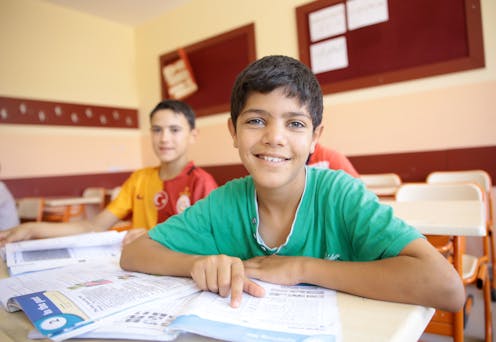Refugee students struggle with displacement and trauma. Here are 3 ways schools can help them belong
- Written by Scott Imig, Associate professor, Educational Leadership and Management, University of Newcastle

As the United States withdrawal from Afghanistan culminated in tragic scenes at Kabul airport[1] in recent months, Australians saw a glimpse of the lives of people trying to escape dangerous situations to find safety for their families.
Many Afghans were brought to Australia[2], some having to tragically leave behind families.
Australia is anticipated to issue about 3,000 humanitarian visas to Afghan refugees[3] this year. That number could grow to 20,000 in the next few years[4]. About half of the refugee population[5] resettled to Australia are children.
Overall, there are more than 11,000 students from refugee backgrounds[6] attending government schools in New South Wales and about 1,800 new refugee students enter the state school system each year.
Principals and teachers are among Australia’s most important front-line workers. Over the past two years, they have helped communities deal with fires, floods and COVID-19 lockdowns.
Read more: A familiar place among the chaos: how schools can help students cope after the bushfires[7]
In our recently published book Creating Spaces of Wellbeing and Belonging for Refugee and Asylum-Seeker Students[8] we provide strategies for school leaders to help care for young people dealing with trauma and forced migration, and to help them integrate into their new communities.

















